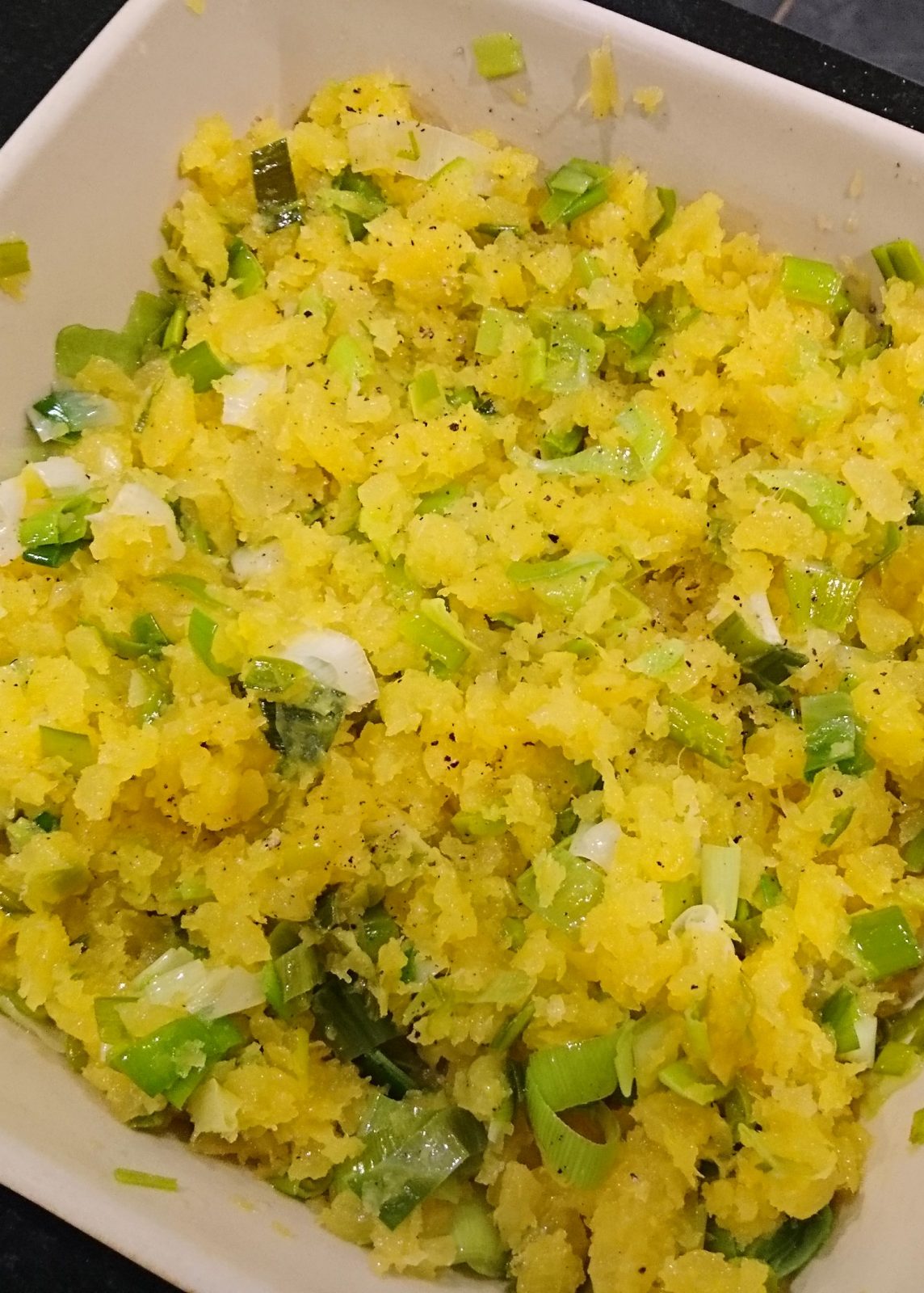
Some of our veg box members are getting restless. At the end of a long, hard winter they’re finding it hard to think of new ways to serve up the humble swede in our veg boxes.
Food writer Nigel Slater says this vegetarian dish is perfect for a warming midweek supper. He adds: “I am also tempted to introduce some crumbled sausage meat, fried until almost crisp in a shallow pan or, better still, a bit of black pudding.”
Serves: 2
Preparation time: 10 minutes
Cooking time: one hour
Ingredients
750g swede
2 medium leeks
60g butter
salt and black pepper
Method
Peel the swede, then cut it into large chunks. Place the swede in a steamer basket over a pan of boiling water, then cook it for about 30 minutes until soft.
Set the oven at 200C/gas mark 6. Meanwhile, trim 2 medium-sized leeks, slice them and rinse thoroughly in cold running water. Melt the butter in a pan, add the leeks and let them cook for 20 minutes or so until they are totally tender.
When the swede is soft, crush it with a fork, vegetable masher or wooden spoon, and season generously with salt and black pepper. Fold the cooked leeks and the melted butter into the mashed swede, then spoon into an ovenproof dish. Bake the mixture for about 35-40 minutes, until the top is lightly crisp.

The humble “neep” of traditional Burns Night fame takes on a posh new identity in this Yotam Ottolenghi dish. The secret is the sage and the walnuts. Served with a green salad, it’s awesome! I used fromage frais instead of double cream and left out the salt. Yotam says: “It also works without the bacon, if you want to make it vegetarian.”
Serves 6 as main course, 8 as a side
Preparation time: 10 minutes
Cooking time: one hour 15 minutes (mostly oven)
Ingredients
25g unsalted butter
1 large onion, thinly sliced (200g net weight)
200g smoked bacon lardons
10g sage leaves, finely shredded
300ml double cream
400ml vegetable stock
1½ tbsp dijon mustard
2 large swedes, peeled, cut in half and then into 3-4mm-thick slices (1.4kg)
Salt and freshly ground black pepper
40g mature cheddar, coarsely grated
40g walnut halves, roughly chopped
Method
Heat the oven to 200C/390F/gas mark 6. Put the butter in a large, 28cm-diameter pot on a medium-high heat. Once it starts to foam, add the onion and bacon, and fry, stirring frequently, for seven to eight minutes, until the onions are soft and the bacon is cooked. Stir in half the sage, the cream, stock, mustard, swede, half a teaspoon of salt and plenty of pepper, bring to a boil, then turn down the heat to medium and leave to simmer for five minutes, stirring every now and then.
Spoon the swedes into a high-sided, 20cm x 30cm ovenproof dish, and pour all the pan juices and bacon bits over the top. Press the swedes down into the dish, and if need be move the slices around, so they’re evenly layered, then roast for 40 minutes, basting and pressing down once more halfway through.
While the gratin is cooking, mix the cheddar with the walnuts and remaining sage. When the 40 minutes are up, sprinkle the cheddar mix all over the gratin and bake for a further 15-20 minutes, until the gratin is dark golden brown and bubbling, and leave to rest for 10 minutes before serving.

This simple vegetable side dish makes a change from boiled carrots and is delicious served with roast meats.
Serves 4
Preparation time: 10 minutes
Cooking time: 20 minutes
Ingredients
300 g peeled, chopped carrot
300 g peeled, chopped swede
30 g butter
freshly ground black pepper
Method
Boil the carrot and swede in a saucepan over a medium heat until both vegetables are tender. Drain, add the butter and then cut through the diced vegetables with a knife until they are in smaller pieces but not mashed. Season with freshly ground pepper to taste and serve.
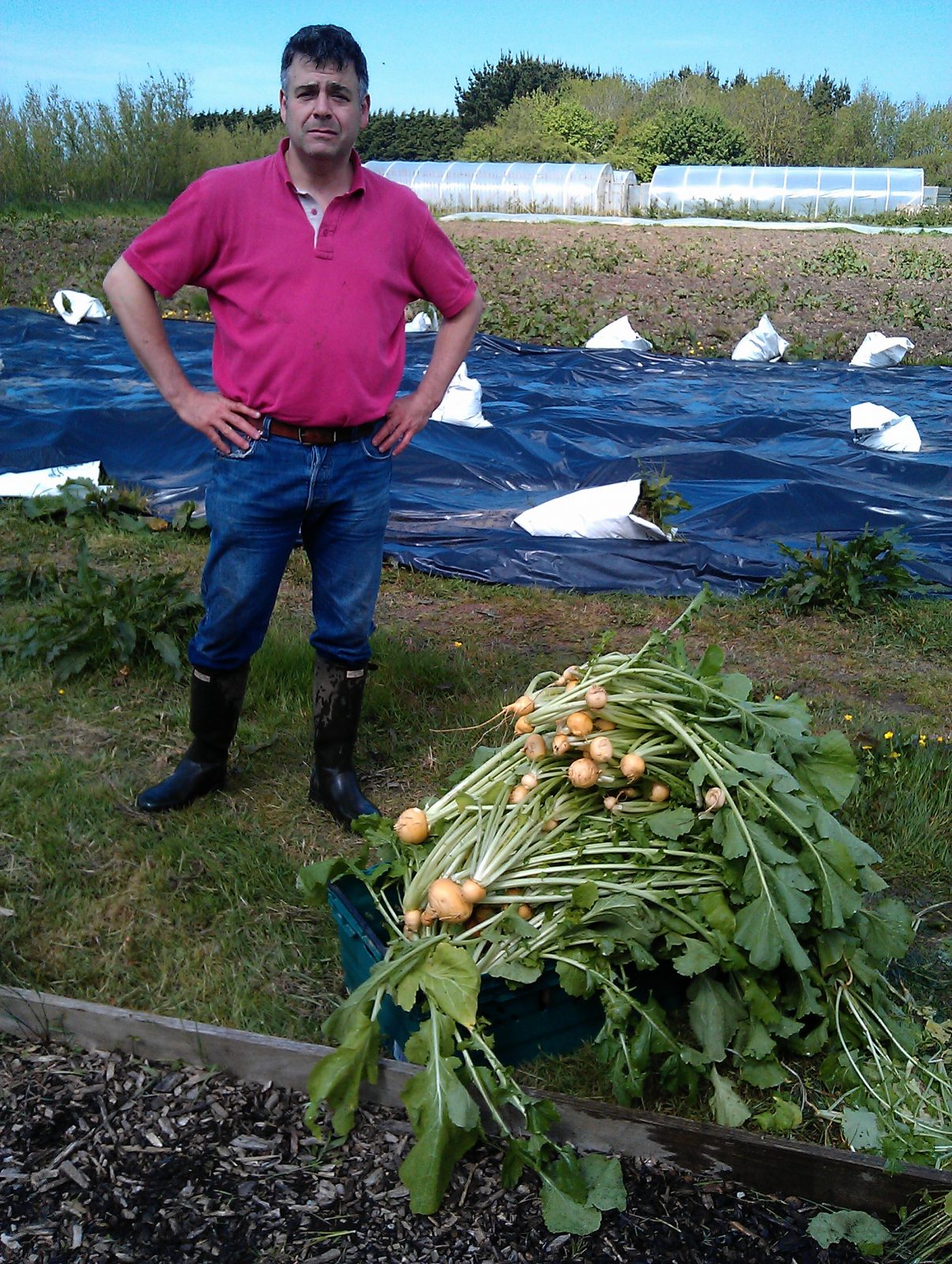
An extremely versatile vegetarian dish that uses up the last of the winter season’s swede in this week’s veg boxes. You can use turnips or swede or a mixture of both. The same goes for spinach and chard.
As Nigel says: “This gently fragrant dish works well with potatoes and parsnips, too. You could use another leaf, perhaps chard or kale.” It comes from his Mid-week dinner feature in The Guardian.
Serves: 6
Preparation/cooking time: 20 minutes
Ingredients
1kg mixed turnips and/or swede
1 onion, finely chopped
knob of butter
1 tsp oil
1 tsp each of cumin seeds, ground turmeric and garam masala
200g spinach or chard
yogurt and coriander leaves, to serve
Peel turnips and swede and cut them into large pieces. Cook the turnip and swede either in boiling, lightly salted water, or in a steamer, until tender.
In a shallow pan, fry a peeled and roughly chopped onion in a little butter and oil until soft and golden, then add the cumin seeds, ground turmeric and garam masala. Continue cooking for a couple of minutes at a moderate heat until all is fragrant.
Wash and remove any tough stalks from 200g of spinach or chard. Place a nonstick, shallow pan over a moderate heat, add the wet spinach and cover with a tight-fitting lid. Let the spinach cook in its own steam for about three minutes, until wilted, then drain and gently press the water from it.
Add the drained turnips and swedes to the onions and continue cooking until they are lightly golden and have soaked up some of the flavour for the spices. Season with a little salt. Fold the spinach into the spiced turnips and swede and serve, if you wish, with a trickle of yogurt and a few coriander leaves. Serves 4.
Nigel’s trick: “Steam your spinach rather than boiling it. The best way I have found is to wash the leaves and, while they are still very wet, put them in a shallow pan to which you have a tight-fitting lid. Place over a moderately high heat, cover and let the spinach cook for a minute or two in its own steam. Lift the lid, turn the leaves with a pair of tongs or a draining spoon, then cook them for a minute more. I find this gives a better result than boiling.”
This easy side dish brings out the sweetness of carrots or swede. It’s from BBC GoodFood’s Olive magazine. You need to cut larger carrots and swede into long, thick batons. Use new-season, thinner carrots whole.
Serves: 4
Preparation / cooking time: 25 minutes
Ingredients
400g carrots, scrubbed or peeled (cut into long, thick batons if necessary)
Or 400g swede, peeled and cut into long, thick batons
1 tbsp honey
15g butter
Method
Simmer the carrots or swede in a large wide pan until just tender, about 15 minutes. Drain off all but a few tbsp of the cooking water then add the honey and butter and season well. Turn the carrots or swede over the heat until glazed and golden.

This week’s recipe is in honour of the Pastygate scandal that rocked Westminster this week. (The humble swede is a vital ingredient in a traditional Cornish pasty).
It’s another Nigel Slater special from his book Tender. Also a good way to use some of the Camel CSA garlic in our standard veg boxes this week.
He says: “The swede’s ability to sponge up liquid is shown to good effect when it is baked with butter and vegetable stock. When it is teamed up with potato and seasoned with garlic and a spot of mustard, it is as near to a main course as I feel you can safely get with this particular root.”
Serves: four
Preparation time: 20 minutes
Cooking time: One hour 30 minutes
potatoes – 500g
swede – 500g
garlic – 4 cloves
butter – 85g
Dijon mustard – 2 heaped teaspoons
thyme leaves – a level teaspoon
vegetable stock – 55ml
Peel the potatoes, then cut them into very fine slices. A sharp knife is fine,but if you have a mandoline (the vegetable slicer, that is, not the lute-like stringed instrument), use that. Whatever, your slices should be almost thin enough to see through. Do the same with the swede, keeping the slices in cold water to prevent them browning.
Set the oven to 190°C/Gas 5. Peel and thinly slice the garlic. Over a moderate heat, melt the butter in a flameproof dish or sauté pan about 25cm in diameter. When it starts to bubble, turn down the heat and add the garlic. It needs to soften slightly without colouring – a matter of five minutes or so. Take the pan off the heat and stir in the mustard. Tip about two-thirds of the mustard and butter out of the pan and into a jug.
Drain the potato and swede slices and pat them dry with kitchen paper or a clean tea towel. Put a third of the vegetables into the pan, layering them neatly or just chucking them in as the mood takes you, then drizzle them with some of the mustard butter in the jug. Season with the thyme leaves, pepper and salt. Be quite generous with the salt. Repeat this twice, so that all the slices of vegetable are layered with the thyme and the mustard and garlic butter. Now pour the stock over the top.
Cover with a circle of greaseproof paper or kitchen foil, pressing it down well on top of the cake. Bake for about an hour and ten minutes, until tender to the point of a knife. Remove the foil, turn the heat up to 220°C/Gas 7 and bake for a further ten minutes until the top has coloured and crisped a little.
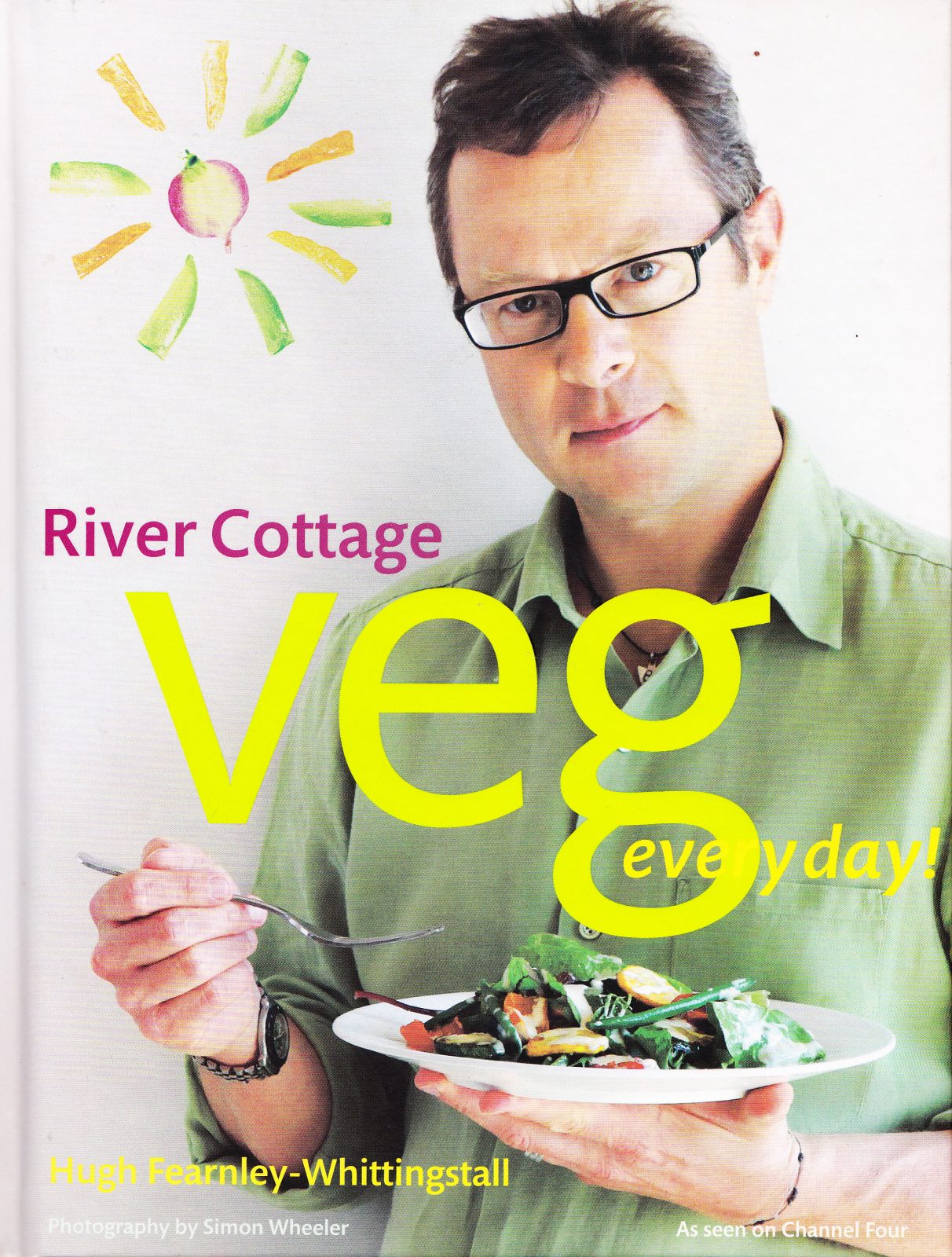
With a selection of roots in our boxes this week – and with the weather getting colder – it seems a good idea to try this ‘comfort food’ recipe from Hugh Fearnley-Whittingstall’s River Cottage Veg Every Day. He says that while it’s not exactly ‘light’, it’s certainly less rich than a creamy dauphinoise-style gratin.
You could also substitute other seasonal roots such as Jerusalem artichokes, carrots or swede which would all work well. Good served with some big flat field mushrooms simply baked with some butter, garlic and cheese, and some good bread.
Serves 4
Preparation: 20 minutes
Cooking: about an hour
Ingredients
30g butter
2 onions, halved and sliced
2 garlic cloves, sliced
1 small celeriac
2 large potatoes
3 large parsnips
a couple of sprigs of thyme, leaves only, chopped
3 sage leaves, finely chopped
about 1.2 litres vegetable stock
sea salt and freshly ground black pepper
Method
Preheat the oven the 180C/gas 4. Melt the butter in a heavy-bottomed frying pan and use some of it to grease a large gratin dish. Add the onions to the pan and sauté over a medium heat for about 10 minutes, until soft, then add the garlic and cook gently for a further minute or two.
Meanwhile, peel the celeriac, potatoes and parsnips and cut into slices the thickness of a 10p piece, slicing the parsnips lengthways. Spread out the celeriac in the gratin dish, season generously with salt and pepper, then sprinkle with half the onions and half the herbs. Layer the parsnips on top, then scatter the remaining onions and herbs on top and finish with a layer of potatoes.
Bring the stock to a simmer and add some salt and pepper, then pour over the vegetables to barely cover them (you may not need all of it). Cover the dish with foil and bake for 30 minutes, then uncover and continue to bake for another 30 minutes or so until the vegetables are cooked.
At this point, if there is still liquid covering the potatoes, spoon off a little and return the dish to the oven for 15 minutes or so, to brown the potatoes on the top. Serve piping hot.
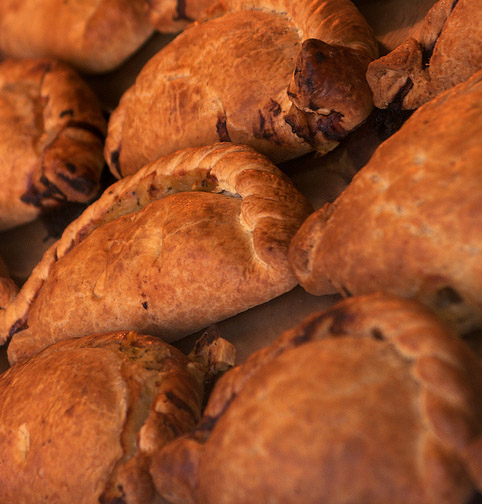
To celebrate the fact that the Cornish Pasty Association (CPA) has received Protected Geographical Indication (PGI) status for its world famous pasty, we thought you might like a traditional Cornish pasty recipe. The difficulty is finding the decisive recipe – there are as many variants as there are pebbles on the beach – but most people agree on the following:
- use a good cut of beef – skirt is the best, chuck is an alternative
- include swede (known as turnip in Cornwall), onion and potato but never carrot
- whether the ingredients are diced or sliced is debatable, but they must go in raw
- seasoning is restricted to salt and plenty of pepper
- the pastry is traditionally shortcrust, made with lard (though a Cornish friend always makes rough puff pastry for hers)
- add a knob of butter or a spoonful of cream for extra richness
The recipe that follows uses grated frozen lard – which adds to the preparation time. Use your normal shortcrust pastry if you prefer.
Serves 4
Preparation: 1 hour +
Cooking: 45-50 minutes
Ingredients
for the pastry:
350g block of lard
450g strong plain flour
pinch of salt
ice cold water to mix
for the filling:
400g beef (skirt or chuck), trimmed and diced
200g onion
200g swede
600g potatoes
salt and pepper
butter/cream
egg wash
Method
Put the lard in its wrapper in the freezer and leave for about an hour until hard. Sift flour and salt into a mixing bowl. Remove the lard from the freezer, peel back the paper, dip into the flour and grate it into the bowl, dipping back into the flour every now and again to make the grating easier. Mix the grated lard evenly into the flour by making sweeping scoops with a palette knife until it resembles heavy breadcrumbs. Stir in 1 tbsp of water at a time until the dough clings together, then form it into a ball. Place the dough in a plastic bag and chill in the fridge for 30 minutes.
Preheat the oven to 200C/gas 6. Keeping separate piles, peel and coarsely chop the onion and peel and dice the swede and potatoes. Roll out the pastry and cut out four circles about the size of a small dinner plate. Sprinkle onion and swede across the centre of the pasty in an oval shape, leaving a 2cm border. Season with salt and pepper. Cover with the meat and then half the potato. Season again and then add the remainder of the potato.
Moisen half the pastry border with a little water, bring up each side of the circle of pastry to enclose the filling, and press together to form a ridge. Crimp with your fingers (see note below).
Grease a flat baking sheet and sprinkle with water. Transfer the pasties to the sheet, prick them in a few places on either side of the seam with a fork and paint all over with egg wash. Bake for 15 minutes, then lower the temperature to 150C/gas 2 and cook for a further 30-40 minutes.
NOTE: How and where to crimp is another question. Some say the crimp should be on top, some on the side. My Cornish friend says she does the crimping on the side then turns the pasty over as she puts it on the baking sheet so that the crimp ends up on top. The CPA’s own recipe shows the crimp on the side.
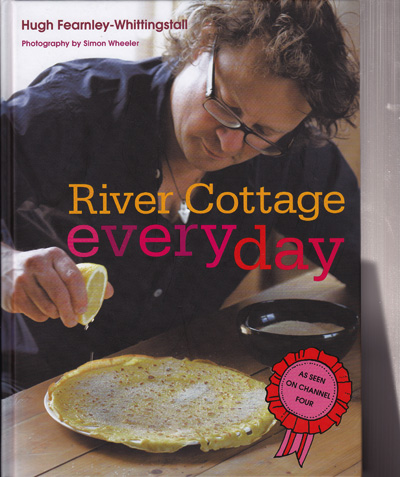
From Hugh Fearnley-Whittingstall who says: “Of course, you don’t have to stick to three roots: you could use two, four or as many as suits you. Do always include potatoes, however, to give the mash body and to stop it getting too sweet.”
Swede or celeriac could also be used as a mash with potatoes.
Serves 6
Preparation and cooking: 30 minutes
Ingredients
500g carrots, peeled and cut into chunks
500g parsnips, peeled and cut into chunks
500g floury potatoes, peeled and cut into chunks
50g unsalted butter or 50ml rapeseed oil
100ml milk (or half milk and half double cream)
freshly grated nutmeg (optional)
sea salt and freshly ground black pepper
Method
Cook the carrots and parsnips in a pan of boiling salted water until tender. Cook the potatoes in a separate pan. Drain the vegetables and let them steam dry for a minute or two.
Put the carrots and pasnips in a food processor (or mash with a potato masher), with half the butter or oil, and blend to a creamy puree. Heat the milk and the remaining butter or oil in the pan in which the potatoes were cooked, then add the potatoes and mash until smooth.
Combine the mashed vegetables, adding plenty of seasoning, including nutmeg if you like, to make a creamy, golden mash. Serve steaming hot, with sausages or roast lamb or venison.

This really tasty recipe comes from Riverford Organic Vegetables. It works just as well without the turnips – just add a bit more of the other roots.
Preparation Time: 20 minutes
Cooking Time: 1 hour
Serves: 4
Ingredients
2 large onions, chopped
2 garlic cloves, crushed
250g puy lentils, rinsed
3 tbsp oil
2 tsp coriander seeds
2 tsp cumin seeds
250g carrots, peeled and cut into 2cm chunks
250g turnips, peeled and chopped
250g swede, peeled and chopped
250g parsnips, peeled and chopped
900ml vegetable stock
1 x 400g tinned chopped tomatoes
salt and pepper
Method
Saute the onion in hot oil with the crushed garlic, until the onion is transparent.
Meanwhile, put the coriander and cumin seeds into a small pan and dry fry for a few minutes, stiring occasionally. Crush with a pestle and mortar. Add the seeds to the onion mixture and cook, stirring for 2 minutes. Add the root vegetables to the onion mixture and cook for a few minutes. Add the lentils and stir well to mix. Pour in the stock and chopped tomatoes. Season with salt and pepper.
Cover and simmer gently for 40 minutes (or cook in a medium oven) until the vegetables are tender and the lentils are soft.


